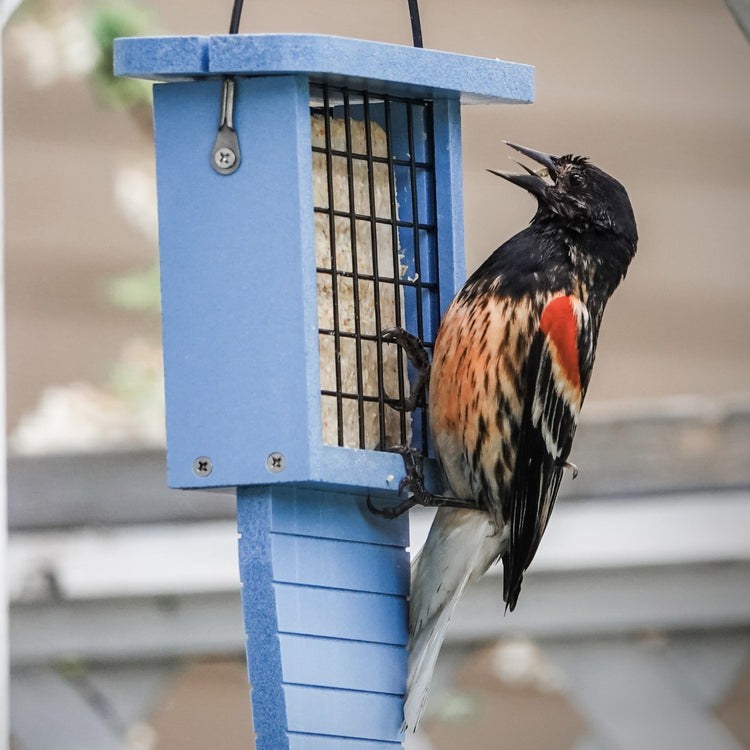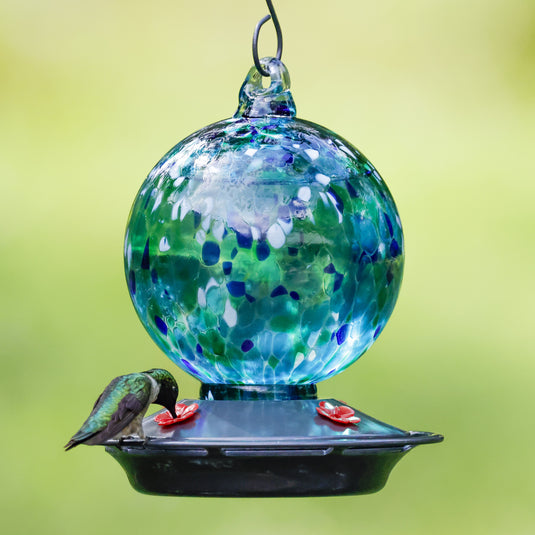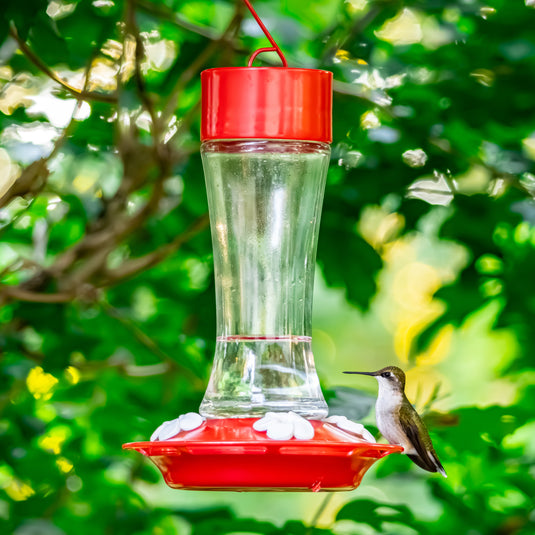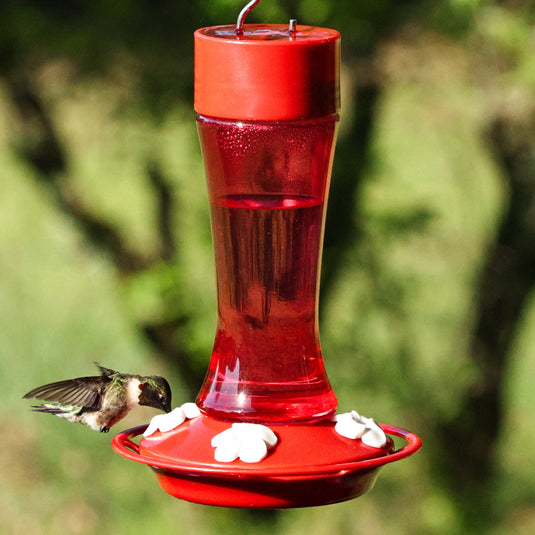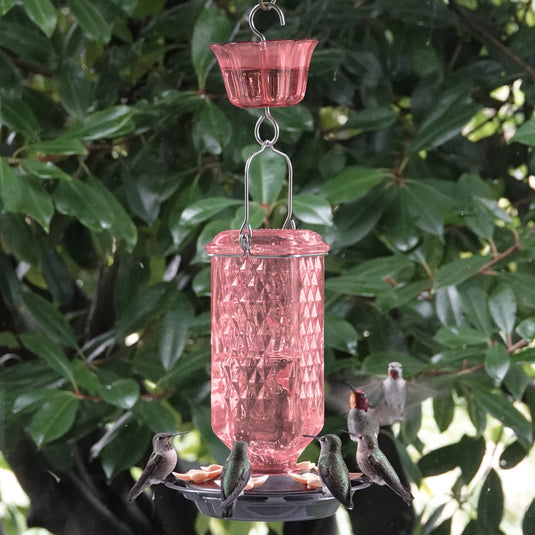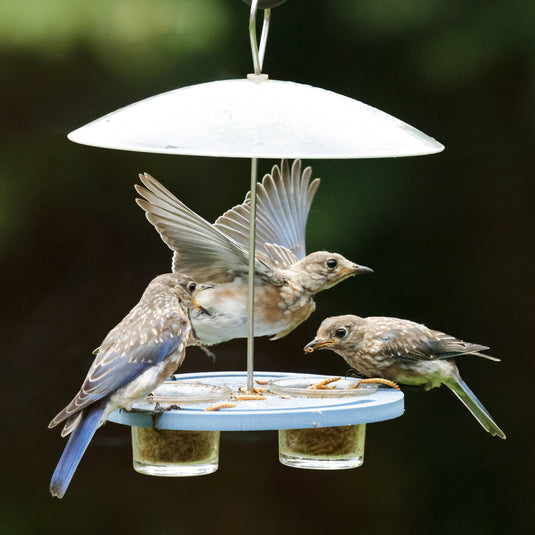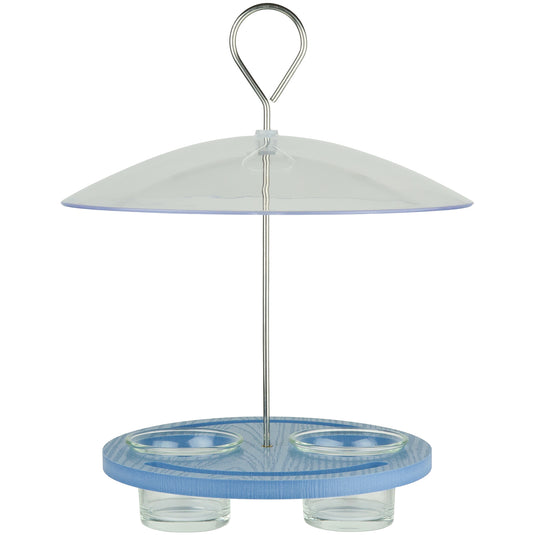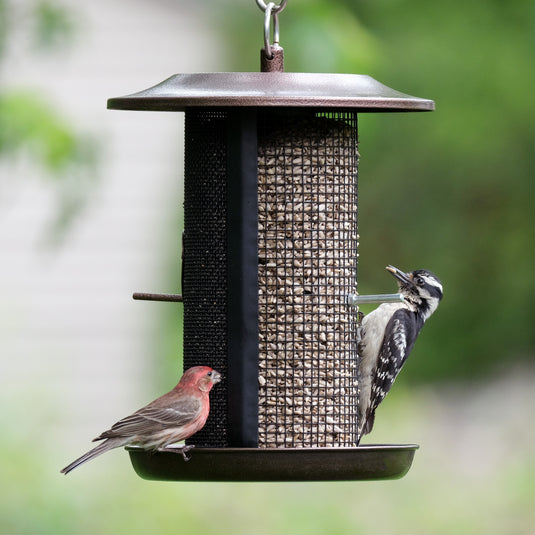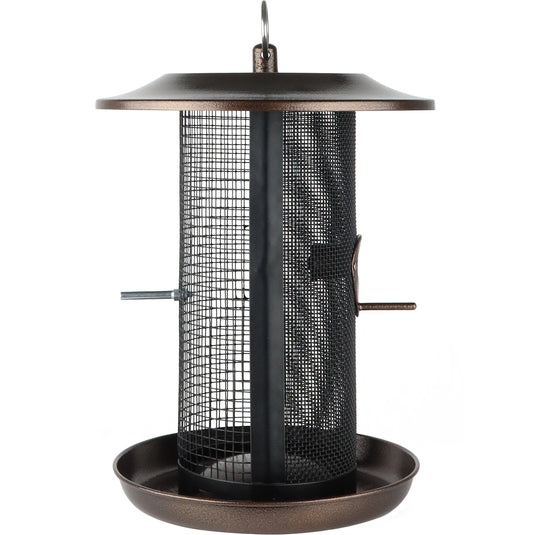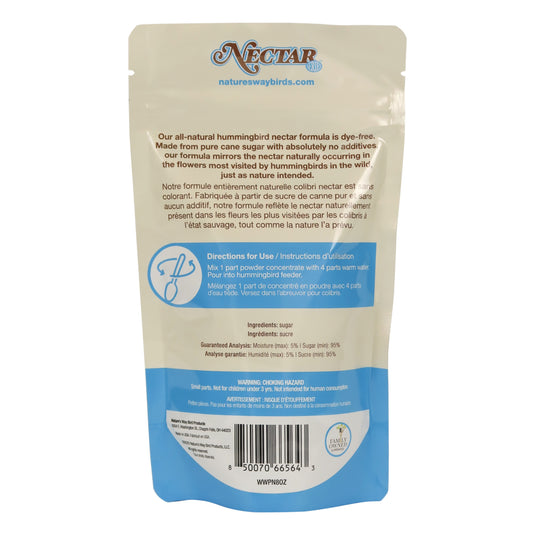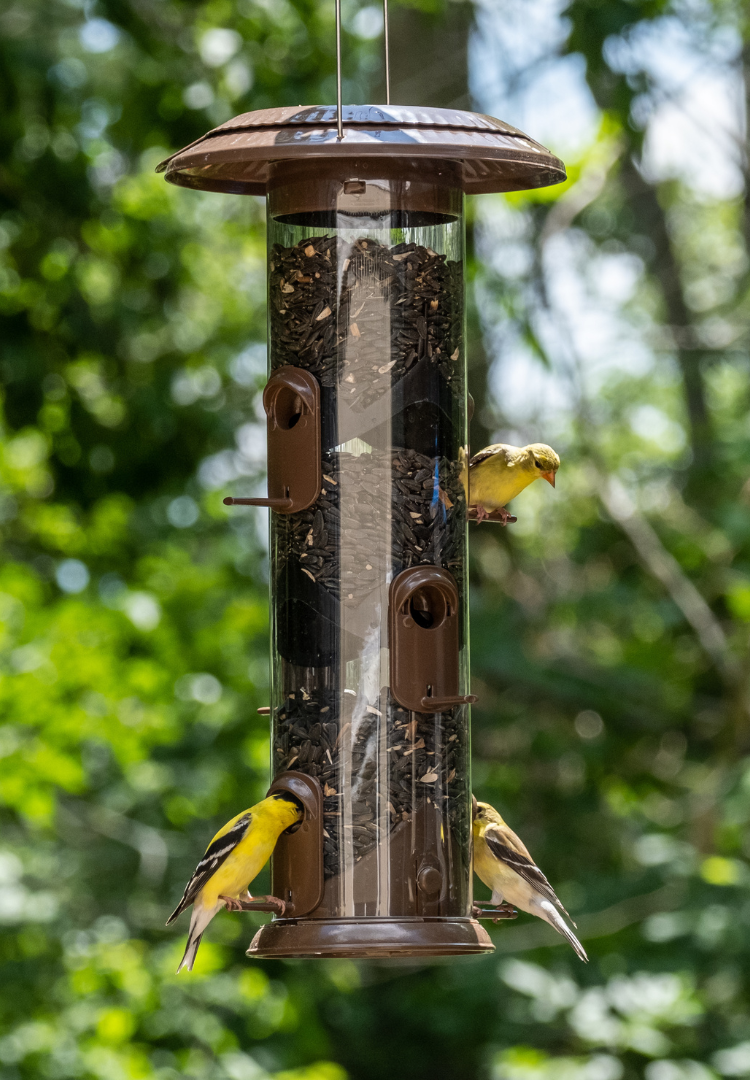Nature sometimes surprises us with birds that look quite different from their field guide descriptions. These unique appearances can result from genetic conditions like albinism, leucism, or piebaldism. Here’s how to distinguish between these rare and fascinating conditions.

Leucistic Red-winged Blackbird by Dawn E., Vancouver Island, BC, CA feeding from Suet Station Recycled Plastic Tail-prop Bird Feeder
Albinism in birds

Albino Hummingbird, Tupelo, MS, USA
Albinism is a rare genetic condition where birds lack melanin entirely, affecting their feathers, skin, and eyes.
How to spot albino birds
- White feathers: Their feathers are completely white due to the absence of pigmentation.
- Pink or red eyes: Albinism results in translucent eyes that often appear pink or red because of visible blood vessels.
- Pale skin and beak: Their skin, legs, and beak are light pink or pale in color, lacking melanin.
Did you know? Albino birds are rare and striking, but they often face challenges, such as poor vision (due to the lack of melanin in the eyes) and increased vulnerability to predators. Their lack of camouflage in the wild can make them easy targets.
Leucism in birds

Leucistic Northern Cardinal by Beth D., Belpre, OH, USA
Leucism occurs when certain feathers lack melanocytes, the pigment-producing cells that give feathers their dark colors. This condition can result from genetic mutations, environmental factors, or age-related pigment loss.
How to spot leucistic birds
- Pale or symmetrical white patches: Feathers may be completely white or have symmetrical patches.
- Normal eye color: Unlike albino birds, leucistic birds retain normal eye pigmentation.
Did you know? Leucistic birds can still retain other pigments, such as carotenoids, meaning they may still show yellow or red hues. For example, a leucistic robin could have white feathers but still display a hint of red on its breast!
Piebaldism in birds

Piebald Dark-eyed Junco
Piebaldism is a genetic condition caused by the improper migration of melanocytes during development. As a result, birds develop irregular, unpigmented (white) patches on their feathers or skin, while the rest of their body retains its normal pigmentation.
How to spot piebald birds
- Asymmetrical white patches: Piebald birds typically have distinct, irregular white patches on a background of normal coloration. The patches are often sharply defined and asymmetrical.
- Normal eye color: Eye color is usually not affected.
Did you know? Unlike leucism, piebaldism results in unique, natural-looking patterns that make each bird look different.
Differences between albino, leucistic, and piebald birds

|
Condition |
Albinism |
Leucism |
Piebaldism |
|
Cause |
Complete absence of melanin production |
Lack of melanocytes in specific areas |
Failure of melanocyte migration |
|
Appearance |
Entirely white, often with pink or red eyes |
Entirely pale or symmetrical patches |
Irregular, asymmetrical white patches |
|
Extent |
Affects the entire body |
Can affect the whole body or parts |
Affects localized areas |
|
Eye color |
Pink or red due to lack of pigment |
Normal |
Usually normal, but may vary |
Whether it’s an albino bird’s unique whiteness, a leucistic bird’s subtle patches, or a piebald bird’s striking patterns, these conditions showcase nature’s fascinating diversity. Keep an eye out for these unusual birds - they’re a rare sight but spotting them makes birdwatching even more rewarding!
RELATED ARTICLES
Backyard bird identification guide
5 most common hummingbirds in the US and Canada

